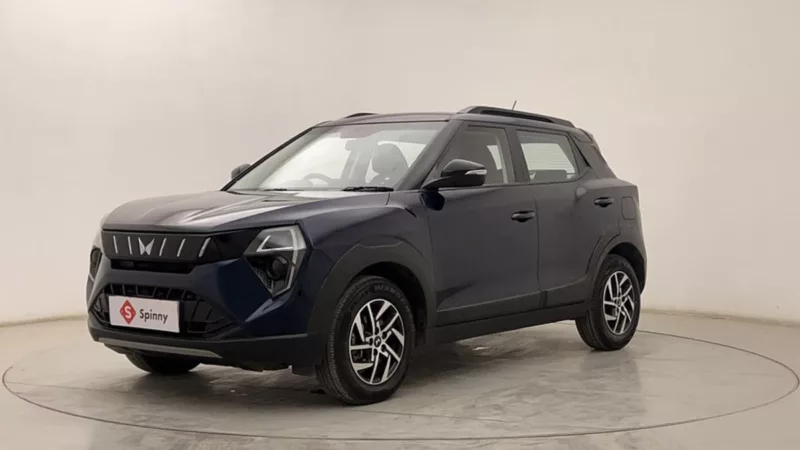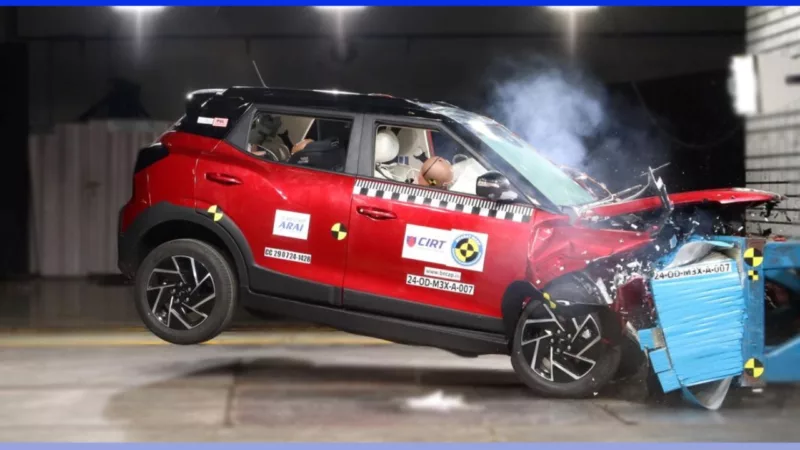In a world where the very air we breathe is being increasingly polluted, it has become more imperative than ever to adopt measures that can mitigate the impact of our actions on the environment. Enter the BS6 norms – a set of regulations that promise to revolutionise the way we think about emissions and fuel efficiency in the automotive industry.
With its stringent standards and cutting-edge technology, the BS6 norms are set to usher in a new era of clean and sustainable transportation. In this blog, we will delve into the complete details of the BS6 emission standard, including its phases, and regulation compliance. We will also answer some of the most asked questions about the BS6 norms in detail.
Certified Used Cars on Spinny
What Are BS6 Emission Norms?
The BS6 (Bharat Stage 6) norms are emission standards mandated by the Government of India for vehicles sold in India. These standards aim to regulate the amount of pollutants emitted by vehicles powered by petrol and diesel engines. The BS6 norms were implemented in India from April 1, 2020, and replaced the previous BS4 norms.
Under the BS6 norms, the permissible levels of pollutants such as carbon monoxide, hydrocarbons, nitrogen oxides, and particulate matter are much lower than those of the previous BS4 norms. This has led to the development of new engine technologies and exhaust systems that are more efficient and cleaner.
BS6 Norms Phase 1
The BS6 (Bharat Stage 6) norms were implemented in India in two phases, with Phase 1 coming into effect on April 1, 2020. This phase brought about significant reductions in the permissible limits of pollutants such as carbon monoxide, hydrocarbons, nitrogen oxides, and particulate matter as compared to the previous BS4 norms. For instance, the nitrogen oxide limit for diesel engines was reduced by a remarkable 70% from the previous standard.
Automakers had to introduce advanced engine technologies and exhaust after-treatment systems like selective catalytic reduction, diesel particulate filters, and enhanced fuel injection systems to comply with these new norms. These technologies were crucial in reducing vehicle emissions and improving fuel efficiency.
The implementation of BS6 Phase 1 had a notable impact on the Indian automobile industry, with many automakers investing heavily in upgrading their production facilities and developing new engines and exhaust systems to meet the new standards. While this led to an increase in the cost of vehicles, it was ultimately necessary to pass on these expenses to the consumers.
BS6 Norms Phase 2: Real Driving Emission
Phase 2 of the BS6 norms, which came into effect on April 1, 2023, focuses on Real Driving Emission (RDE) testing.
RDE testing is emission testing that measures the pollutants emitted by a vehicle while driving on the road under real-world conditions. Unlike laboratory testing, RDE testing provides a more accurate assessment of a vehicle’s emissions in real-world driving scenarios.
Under the BS6 Phase 2 norms, all new vehicles must undergo RDE testing to obtain certification. The RDE testing will be conducted on public roads, and the vehicles will be equipped with portable emission measurement systems (PEMS) to measure their emissions in real-time.
The RDE test will measure emissions of pollutants such as nitrogen oxides (NOx), carbon monoxide (CO), hydrocarbons (HC), and particulate matter (PM). The limits for these pollutants have been set by the government and are much lower than the limits prescribed under the previous BS4 norms.
Implementing BS6 Phase 2 norms with RDE testing significantly reduces vehicular emissions and improves air quality in India. This move will encourage automobile manufacturers to develop and produce more fuel-efficient vehicles that emit fewer pollutants.
However, implementing BS6 Phase 2 norms also poses some challenges for automobile manufacturers. The RDE testing process is more complex and expensive than laboratory testing, requiring significant investments in testing equipment and infrastructure. Moreover, complying with the lower emission limits can be challenging for manufacturers, as it may require them to use new technologies and redesign their engines.
BS6 Regulation Compliance
Compliance with BS6 regulations is mandatory for all new vehicles sold in India, and non-compliance can result in heavy penalties and fines. To comply with the regulations, automobile manufacturers have had to make significant investments in research and development to redesign engines, exhaust systems, and other components to meet the new emission norms.
The implementation of BS6 regulations has also led to a shift in the type of fuel used in vehicles. BS6 fuel has a lower sulphur content than BS4 fuel, and it is also a cleaner fuel that produces fewer emissions. The transition to BS6 fuel has been smooth, with most oil companies offering BS6 fuel across the country.
To ensure compliance with the regulations, the government has set up a testing infrastructure that includes laboratories and testing facilities that can test vehicles for emissions compliance. The government has also set up an online system for manufacturers to register and obtain certification for their vehicles before they are sold in the market.
The implementation of BS6 regulations has not been without challenges. The cost of compliance has been significant, which has led to an increase in the price of vehicles. The pandemic has also added to the challenges of compliance, with some manufacturers facing production delays and supply chain disruptions.
BS6 Norms In India Summary
In conclusion, the implementation of BS6 regulations in India has been a significant step towards reducing vehicular emissions and improving air quality. Compliance with these regulations is mandatory for all new vehicles sold in India and requires significant investments in research and development, as well as changes to the technology used in automobiles.
While compliance with the regulations has presented some challenges for the Indian automobile industry, it has also encouraged manufacturers to develop and produce cleaner and more efficient vehicles.
The successful implementation of BS6 regulations will require ongoing cooperation between the government, manufacturers, and consumers to ensure that compliance is maintained, and the benefits of the regulations are realized. Ultimately, the shift towards cleaner and more sustainable transportation is essential for creating a better future for all.
FAQs
Q. What is the BS6 full form?
The BS6 full form is Bharat Stage 6, representing the most recent emission standard created by the Indian government to control vehicle-related emissions.
Q. What is the BS6 meaning?
BS6 refers to emission rules that are aimed at minimising a car’s carbon footprint. These standards impose a limit on the release of harmful pollutants such as nitrogen oxides, particulate matter, and hydrocarbons from petrol and diesel engines.
Q. What was the BS6 launch date in India?
The BS6 launch date in India was April 1, 2020. Since then, all new vehicles have been required to comply with Bharat Stage 6 norms.
Q. How do Bharat Stage 6 norms impact vehicle costs?
The shift to Bharat Stage 6 standards has led to the adoption of more advanced engine and exhaust systems, increasing production costs. This has resulted in a 10–15% rise in the prices of BS6-compliant vehicles.
Q. Why does BS6 provide less mileage than BS4?
The BS6 rules call for the adoption of technology like selective catalytic reduction and diesel particle filters. These engines consume more energy and lower fuel efficiency, producing less mileage than BS4 engines.



 ne big family!
ne big family!